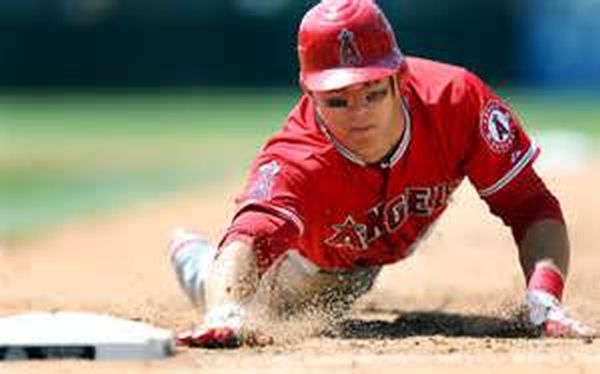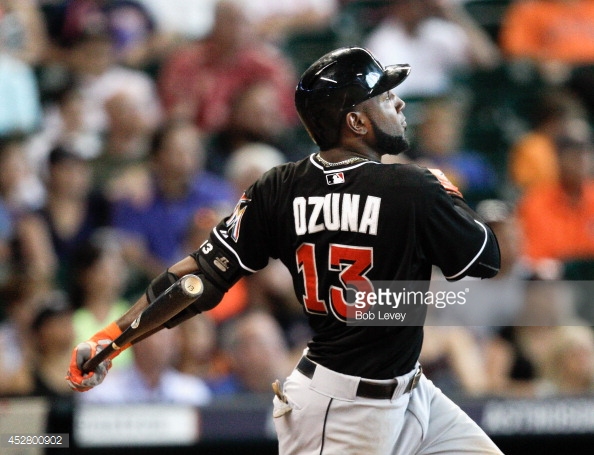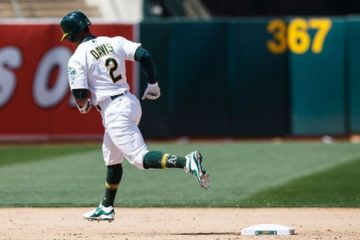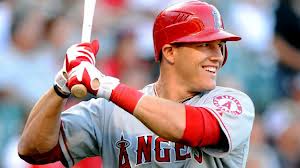2014 Fantasy Baseball: Too Early Top 20 OF For 2014, Part II
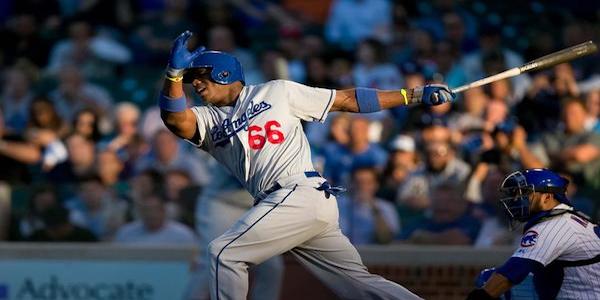
I went over my top ten in my previous piece. To catch you up, if you were unable to read it or found this one first, my top 10 is as follows: Trout, McCutchen, Gonzalez, A. Jones, Ellsbury, Gomez, Harper, Stanton, Braun, & Bautista. I did my best to explain my reasoning in a concise way, so please give it a read. I even included some GIFs for you!
This piece, part II, will round out the top 20 by ranking outfielders 11-20. The guys on this list could very well make the jump into the top 10, they just have a few more question marks than the guys I put above them.
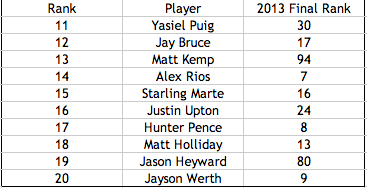
Lightning rod Yasiel Puig resides at number 11. I’ve never seen a player be able to be on both sides of the fence of love and hatred quite like Puig. Personally, I love Yasiel Puig. Many of the questions I had regarding Puig’s game were somewhat answered down the stretch in 2013. Granted, when it comes to Puig we’re dealing with an extremely small sample size. Puig’s penchant to swing early and often drew comparisons to Jeff Francouer. Those comparisons were wrong on many merits, but we won’t get into those here. What we care about is if Puig improved on those areas throughout the year. He did.

Puig isn’t the hacker that many people believe he is. He flashed his ability to work counts as pitchers began adjusting to him later in the season. He still chases a pretty good amount and his swinging strike rate is plenty scary, but he’s not Jeff Francoeur.
If you’ve read my writing before you know that I love hitters that can drive the ball to all fields. Puig proved on multiple occasions that he has the ability to hit the ball out to right field. He isn’t the most efficient base runner (58%), but the Dodgers haven’t shown many signs of putting the brakes onto him. Puig’s 2014 should be a good one.
Jay Bruce is one of the most consistent players around – at least on a yearly basis. His monthly peaks and valleys might worry you, but as our own Brett Talley opined the other day, they shouldn’t.
Matt Kemp was an extremely difficult player to rank for me. We all know that he has a tremendous amount of potential. We’re also unsure of who he actually is at this point in his career. It’s nearly impossible to quantify – at least at this point – how much shoulder surgeries hamper power. Kemp’s teammate, Adrian Gonzalez, has spoken about how he simply does not have the power that he did before he had to undergo surgery. To pile on a little more, Kemp will also be coming off of ankle surgery, which you would have to think would dampen his stolen base projections. I’m fine with admitting that Matt Kemp is in my top 15 based nearly solely on his reputation. I wouldn’t fault you for passing on him here, but his upside is too immense to not include him.
To summarize my ranking of Alex Rios: “this feels weird.” When I began my rankings work, there was absolutely no way I was going to include Rios in my top 20. I cannot make myself trust him, for whatever reason, but I guess I should. Despite his perceived ups and downs Rios has been one of the best fantasy baseball assets over the last 4 years.

If you do your best to forget Rios’ terrible, no good 2011 campaign, he’s actually been pretty consistently valuable from a fantasy perspective. Rios is very similar to Jay Bruce – and other players to a certain extent – in the sense that his production fluctuates very wildly from month to month. Baseball is a streaky game and you could argue that Rios is the game’s streakiest player. However, when you look at his line from a year long perspective he is plenty valuable. He’s in a good lineup in Texas and should be an asset in at least 4 of the 5 standard categories in 2014.
Starling Marte isn’t exactly flashy and is very similar to the man listed above him – albeit with a little less power. He’s a sum of all parts guy at the moment – with speed being his only standout skill. Marte has a lot of flaws in his game and approach, luckily for us, the majority of those flaws matter more to his real life value than his fantasy value. Marte’s 12 homer 41 steal campaign seems right in line with many scouts and insiders predicted for his skill set. He shouldn’t have much of a problem duplicating his 2013 success and the fact that Pittsburgh has him penciled in as their lead-off hitter again should make him an asset again in the runs category. Marte is a somewhat riskier option if you prefer to draft someone in the Ellsbury mold, but don’t want to pay the price.
That brings us to the very divisive Justin Upton. Many people have soured on Upton, due to the fact that they expected more from him as soon as he burst onto the scene. Despite his shortcomings, Upton is perfectly fine asset to have on your fantasy team. Upton’s problem throughout his career has been his inconsistency.
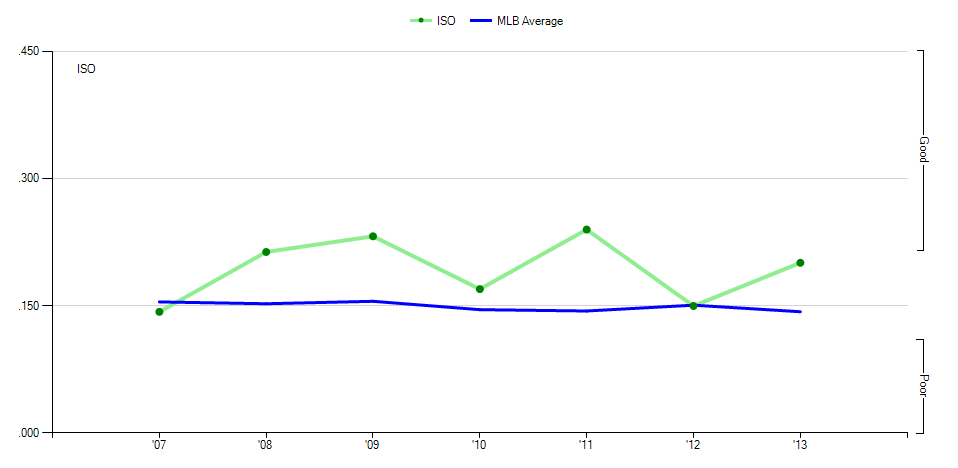
Upton’s seen his isolated power fluctuate a fair amount during his career. One of the two dips – 2012 – can somewhat be explained by a thumb injury he suffered at the beginning of the season. Upton goes as his power goes. However, in 2013 there were some signs in Upton’s plate discipline profile that are quite worrisome. His walk rate bumped up a little to 11.7%, which is good, but nearly everything else about his plate discipline is trending in the wrong direction.
Upton saw his contact percentage on pitches in the zone decline by roughly 8% in 2013. That’s both alarming and astounding. He also saw a 2.3% increase in his swinging strike percentage (SwStr). When you add those two factors together you get Upton’s career high 25% strikeout rate. I’m worried about these new developments, so watch them closely in 2014.
Hunter Pence came back from fantasy purgatory in 2013 to put together the first 20/20 campaign of his career. The homers did not shock me; the steals did. It’s not common for guys to steal 20+ bags for the first time in their career in their age 30 season. Nonetheless, Mr. Pence did it and was rewarded very handsomely for it. Many people, including myself, wrote Pence off a little bit after his poor second half that followed his trade to the San Francisco Giants in 2012. It’s obvious that I was wrong.
Pence’s largest improvement from 2012 to 2013 was the jump in his contact rate back near his career norms. He didn’t make quite as much contact as he was used to during his down 2012 season, but he was able to reverse that trend and get back to what made him successful earlier in his career during 2013. Pence’s skills all seem to be in order for 2014. He’ll likely hit 20+ home runs again for the 7th year in a row. Due to his position in the Giants’ lineup he should be just fine in the runs and RBI categories. I would not expect more than 10 steals, though, anything above that is just gravy on top.
Matt Holliday is one of the most consistent bats in the game. Year in and year out he’s virtually a lock to hit near .300 with 20+ home runs and drive in 100+ runs. Those numbers, while not necessarily sexy, are very valuable. Holliday, though, looks like he’s beginning to be decline a little, at least in the power department. The decline – although modest right now – should not shock anyone due to his place on the aging curve.
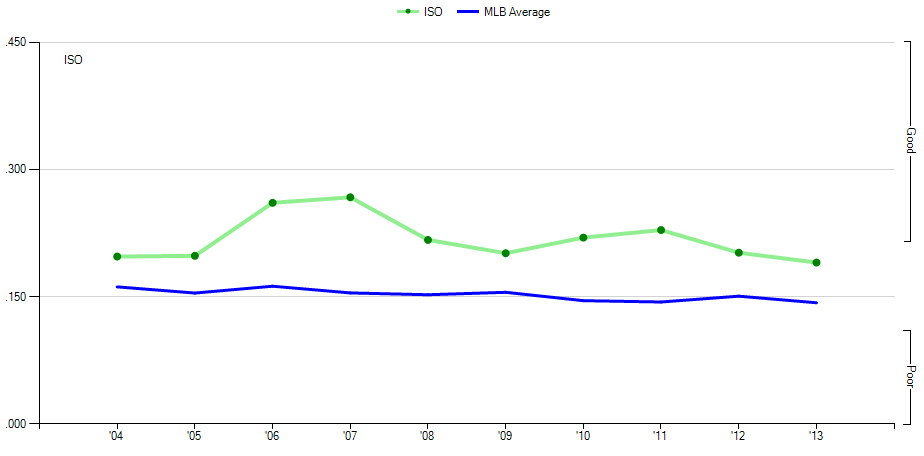
As you can see, after a resurgence to nearly his prime power levels of 2006 & 2007, Holliday’s ISO declined once again in 2013, to .190. The drop in Holliday’s ISO to below .200 marked the first time since 2004 & 2005 that his ISO was below .200. His isolated power wasn’t the only thing to decline in 2013. Holliday saw his batted ball distance decline to a three year low 289 feet; which was still good enough for 69th out of 300 hitters. Holliday is aging, but much like Adrian Beltre, he’s doing it extremely well. I’m expecting more of the same from him in 2014, although a slight decline should be considered when you’re drafting.
*Full disclosure, I absolutely love Jason Heyward. In fact, if you follow me on Twitter (@joneslandon) during the season you will constantly see me tweeting, “Jason The Best” whenever he does something noteworthy.*
Now that we have that out of the way, let’s cut to chase. Heyward was disappointing in 2013. Between injuries, that for the most part weren’t his fault, and general inconsistency for most of the season he let down a ton of fantasy owners. The future doesn’t have to be as grim as the past though.
Heyward put together a very nice run towards the end of the season and was well on his way to recouping some of the value he lost due to his slow start to the season. It did correlate, somewhat, with his move into the lead-off spot, but most of the groundwork had already been laid for a nice rebound before a lineup change was made. Heyward’s 2013 saw him regain some of the patience that made him so phenomenal during his 2010 rookie season combined with the power – post appendectomy – that he flashed during his 2012 campaign.

Heyward’s ability to reverse some alarming trends (increasing chase% & swinging strikes) allowed him to post an 11% walk rate and the best strikeout rate of his career at 16.6%. Those are obviously some important things, but we don’t exactly get credit in fantasy for improving peripherals. Heyward’s struggles in during the beginning of the season were mostly due to his struggles with pitches thrown to three main portions of the strike zone: inside, up, and low and away.
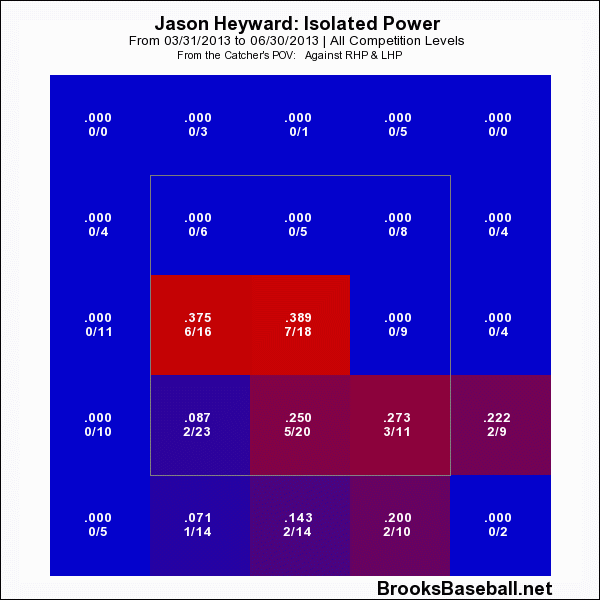
It’s very hard to tease out how much the appendectomy affected his pop. Many of the balls he hit directly after returning seemed to just die at the track; they did not have the life we’re used to seeing when he puts a good swing on it. Once the power came back, everything came back. The ground work controlling the strike zone began to pay dividends.
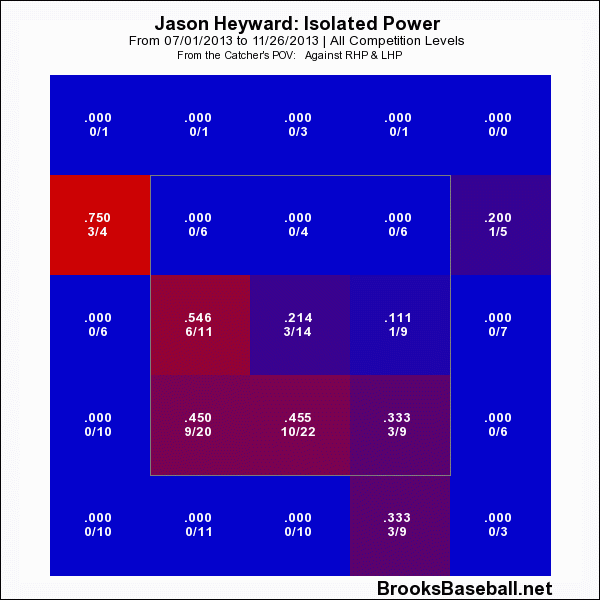
For as long as I can remember, Heyward has struggled with pitches inside and pitches up. He’s been a lowball hitter for the majority of his career. During his hot stretch, he punished everything that was in his “zone.” If Heyward’s swinging it well, you can bet that he’s crushing pitches that are down in the zone and going the other way quite often.
From April 1 through June 30, Jason Heyward hit .231/.329/.373. From July 2 through the end of the season he hit .282/.374/.494. The second line seems much more in line with his true talent level. If we were to extrapolate out his production from July – October over 162 games we’re looking at a 28 home run season. We’ve seen him hit 27 before and I believe there’s more in the tank, especially due to his regained patience. However, I’m concerned about the stolen base chances. Heyward only swiped 2 bags last season, which is much less than anyone projected. It’s certainly on him somewhat, but the Braves ran less than all but 6 teams in 2013. If the team isn’t running much then it’s hard to project more than 10 steals for Heyward in 2014. I’m expecting a return to 2012 form for him in 2014, except with perhaps a little better results in average and fewer steals with room for growth in the power department.
Jayson Werth will round out my top 20. Werth looked very much like the Werth that the Nationals thought they were signing when they ponied up $126 million during the winter of 2010. Werth’s plate discipline hasn’t taken a dive during his tenure in Washington. He’s had a season where his counting stats were modest, but acceptable. And a season where his rate stats were good, but his counting stats were held down by an incredible lack of power. 2011 is a distant memory at this point, but it looks like more bad luck than anything else. Nearly everything about his 2011 season is identical to his career norms, so I’ll somewhat chalk it up to unfortunate breaks.
2012’s power outage can also somewhat be explained by the fact that Werth broke his wrist during a game in early May. No one needs for me to explain how much of an affect someone’s wrist has on their power output. So, once again, the circumstances were unfortunate. His peripherals were, like 2011, more or less in line with his career norms.
In 2013, we finally saw Werth get back to his old self. Obviously his wrist was healthy and he wasn’t letting poor luck get in his was of posting great rate stats because he hit line drives on a career best 26% of the balls he put in play.
Werth looks to be mostly who he was when he signed his large contract, except for the fact that he’s in his mid-30’s. Like most older players, Werth should be expected to decline a little, but the skills seem mostly intact. Let’s hope Werth’s ever steady peripherals allow him to churn out another phenomenal season in 2014.
In my next piece, I’ll take a look at my top 10 starting pitchers. It was undoubtedly my toughest list to make and I’m sure they’ll be a little disagreement. So, come by and let’s talk about it.


